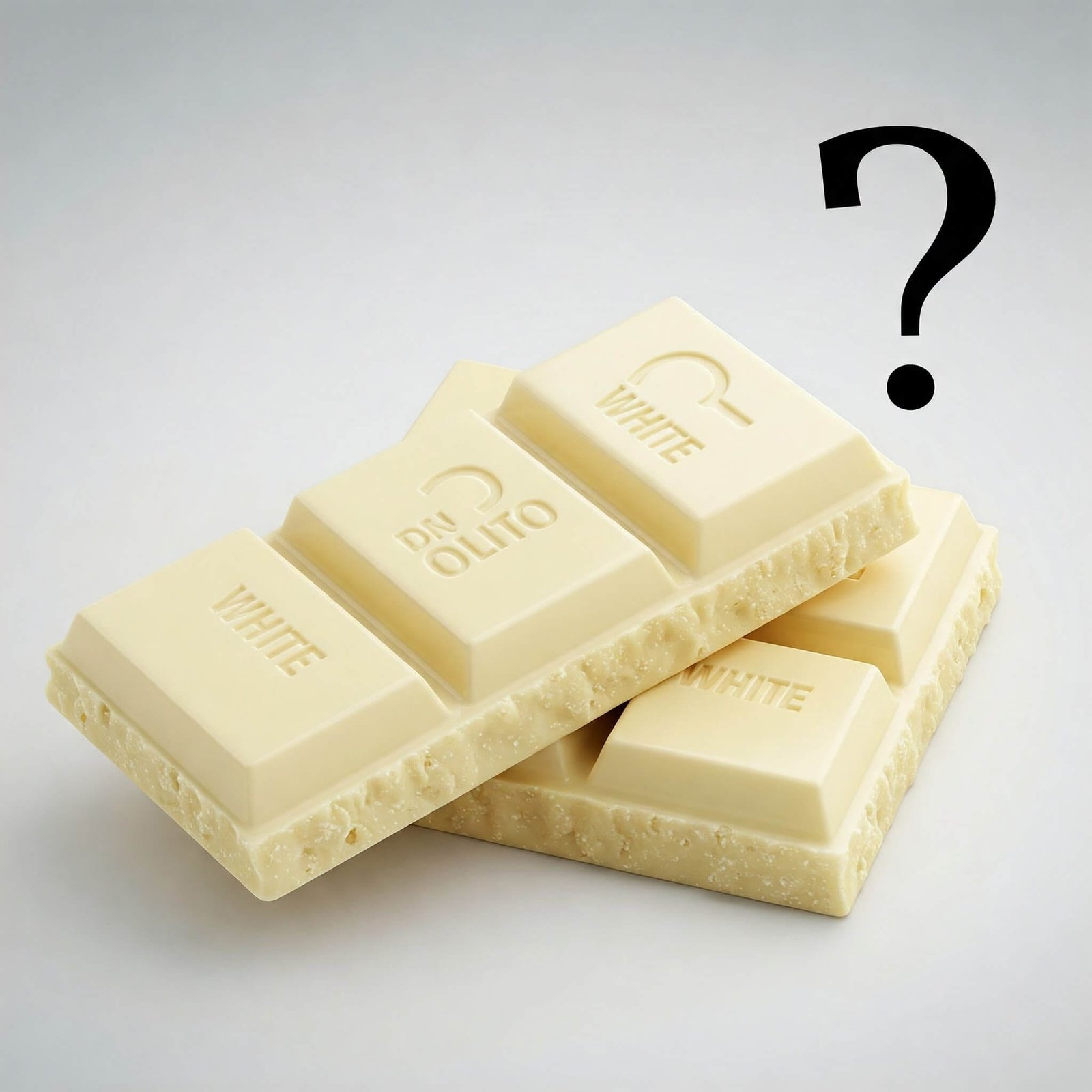The Sweet Truth: white chocolate is not actually chocolate

🍫✨ Think you know chocolate? Think again! Dive into the creamy, controversial world of white chocolate—a treat that’s not quite what it seems. In fact, white chocolate lacks the essential cocoa solids found in true chocolate. It’s essential to understand that white chocolate is a unique confection in the chocolate family.
Many people are surprised to learn that white chocolate raises discussions about what defines true chocolate.
1. The Anatomy of Chocolate: Cocoa Solids vs. Cocoa Butter
True chocolate gets its signature flavor from cocoa solids (the non-fat part of cocoa beans) and cocoa butter (the fatty component). Dark and milk chocolates blend both, but white chocolate skips the cocoa solids entirely. Instead, it’s crafted from:
Moreover, many dessert lovers often wonder how white chocolate fits into the larger category of confections.
- Cocoa butter (the smooth, melt-in-your-mouth fat from cacao beans)
- Sugar (lots of it!)
- Milk solids (for that creamy texture)
- Often a dash of vanilla for flavor
No cocoa solids = no chocolatey bitterness. That’s why white chocolate tastes sweeter and milder!
2. A Happy Accident: The Birth of White Chocolate
It’s fascinating to think that white chocolate remains a beloved ingredient in many recipes.
While white chocolate debuted in 1936, the debate continues, with many insisting on its lack of cocoa solids.
For those who enjoy exploring flavors, understanding white chocolate can open up new culinary experiences.
Thus, the consensus is clear among some: white chocolate is not actually chocolate, and its unique composition sets it apart in the dessert world.
White chocolate debuted in 1936, thanks to Nestlé in Switzerland. They sought to use excess cocoa butter left after making milk chocolate powder. The result? A silky, ivory-hued confection that polarized dessert lovers.
As legal definitions evolve, it remains clear that white chocolate is not actually chocolate according to strictest standards.
Many culinary experts emphasize its classification, sparking an ongoing debate.
3. Legal Drama: Is It Even Chocolate?
Governments have strong opinions! To be labeled “white chocolate” in the U.S., the FDA mandates:
- ≥20% cocoa butter
- ≥14% milk solids
- ≤55% sugar
Skip the cocoa butter (e.g., use vegetable oils), and it’s just a “white baking chip”—not the real deal. The EU has similar rules, but purists still argue it’s an imposter.
4. Health Hype vs. Reality
- 🚫 No cocoa solids? Say goodbye to the antioxidants in dark chocolate.
- 🍬 Sugar overload: Often higher in sugar than milk or dark chocolate.
- 💡 Silver lining: Cocoa butter contains heart-friendly fats. Moderation is key!
Chefs often highlight that while delicious, white chocolate is a versatile ingredient that enhances various dishes.
5. Culinary Chameleon: Why Chefs Love It
White chocolate’s mild, buttery flavor makes it a kitchen star:
This ongoing debate can influence consumer choices and culinary trends.
Understanding its nature can enhance your appreciation for this unique treat.
It’s fascinating how opinions differ, with some firmly believing in its classification, while others embrace it as a treat.
- Balances tart berries in desserts.
- Adds richness to sauces (try it with seafood!).
- Perfect for elegant decorations (no cocoa = vibrant color palette).
This ongoing conversation highlights its unique place in the confectionery world.
As consumers navigate the options, they often find themselves questioning this confection, prompting further exploration into quality.
6. The Great Debate: Love It or Hate It?
White chocolate splits opinion:
- Team Love: “It’s creamy, versatile, and nostalgic!”
- Team Hate: “Without cocoa solids, it’s just fancy sugar.”
Fun fact: In 2021, a German court ruled white chocolate isn’t “chocolate” at all—sparking global dessert drama!
What are your thoughts? Do you think white chocolate is not actually chocolate, or does it deserve a spot on the dessert table?
Ultimately, embracing the distinction is essential for understanding its place in our sweets universe.
How to Spot Quality White Chocolate
Join the discussion: Why do you think white chocolate is not actually chocolate? Let’s explore this delicious topic!
Check the label! Real white chocolate should:
- List cocoa butter as the first ingredient.
- Avoid “vegetable oil” or “palm oil” hacks.
Final Thoughts: Embrace the Unconventional
While it’s not “true” chocolate, white chocolate carves its own niche in the sweets universe. Whether you’re drizzling it over a matcha cake or scoffing at its existence, one thing’s clear: it’s here to stay.
🎤 Drop a comment: Team White Chocolate or Team Never-Chocolate? Let’s debate!
Hungry for more food facts? Subscribe for weekly tasty tidbits! 🍽️✨





